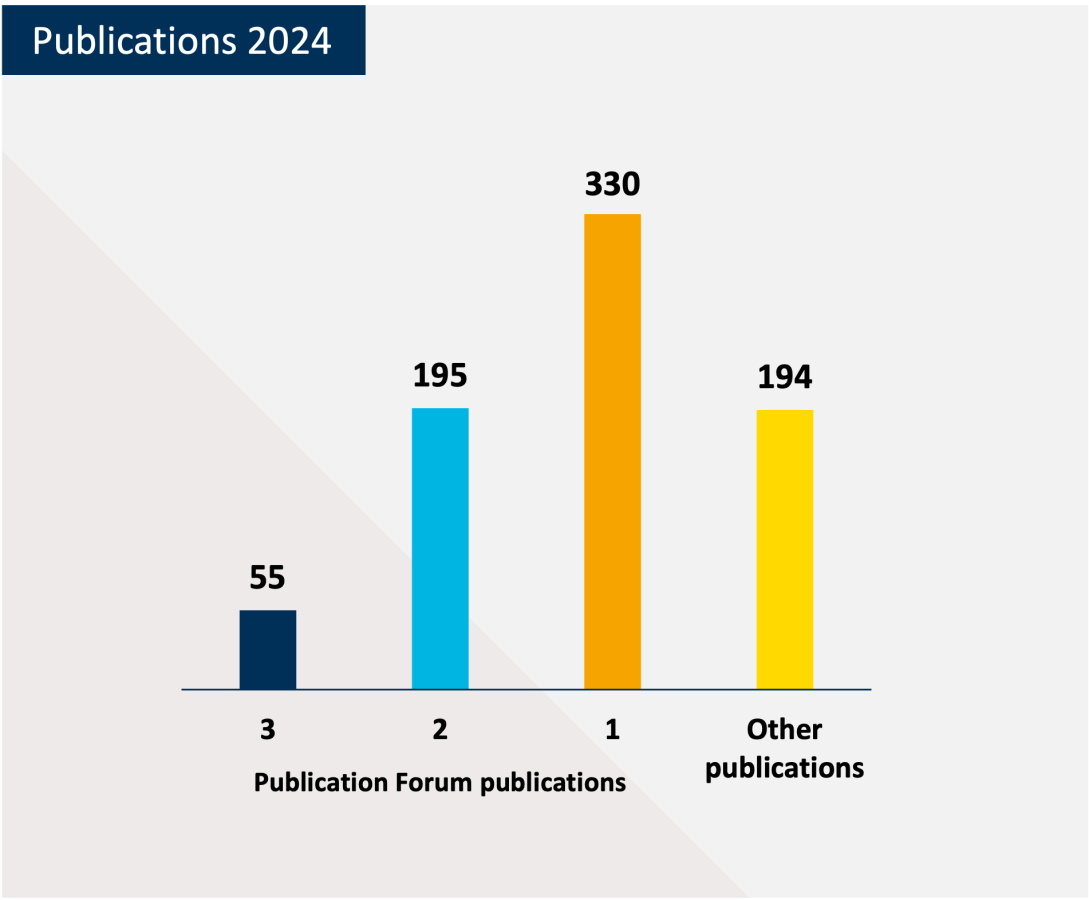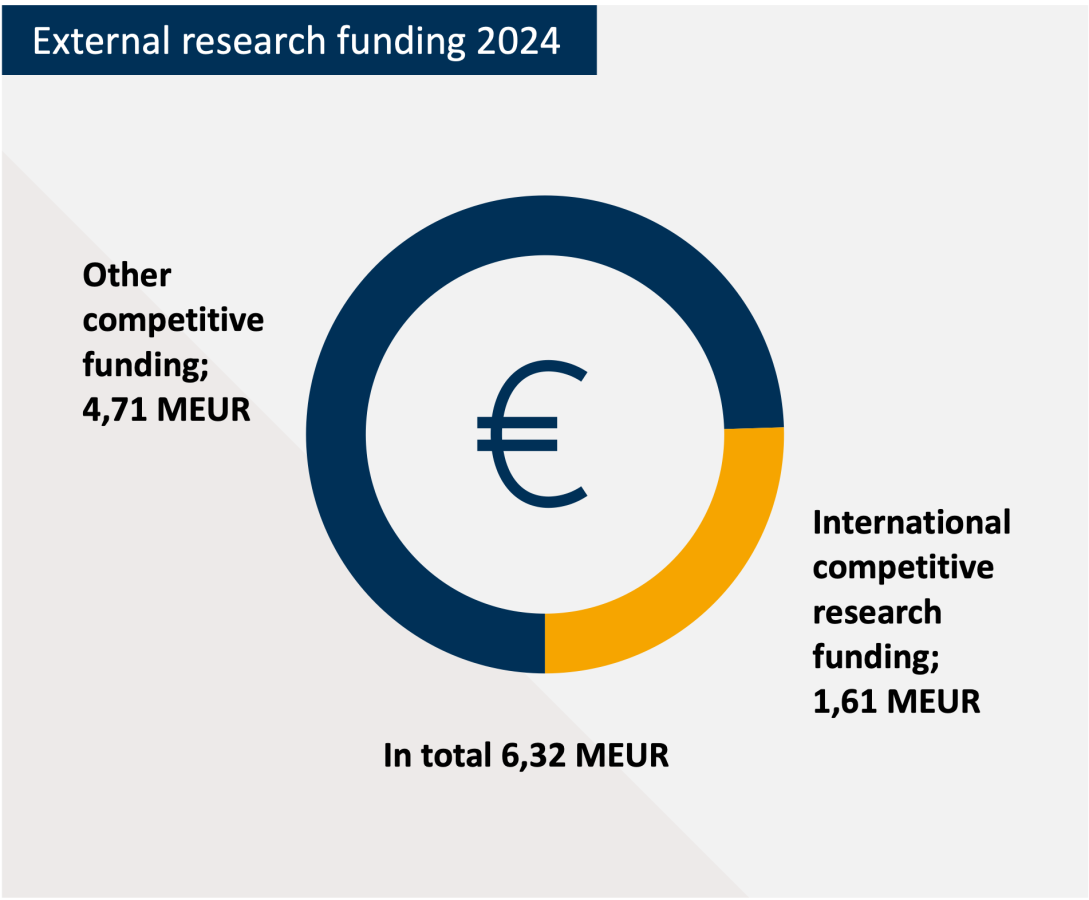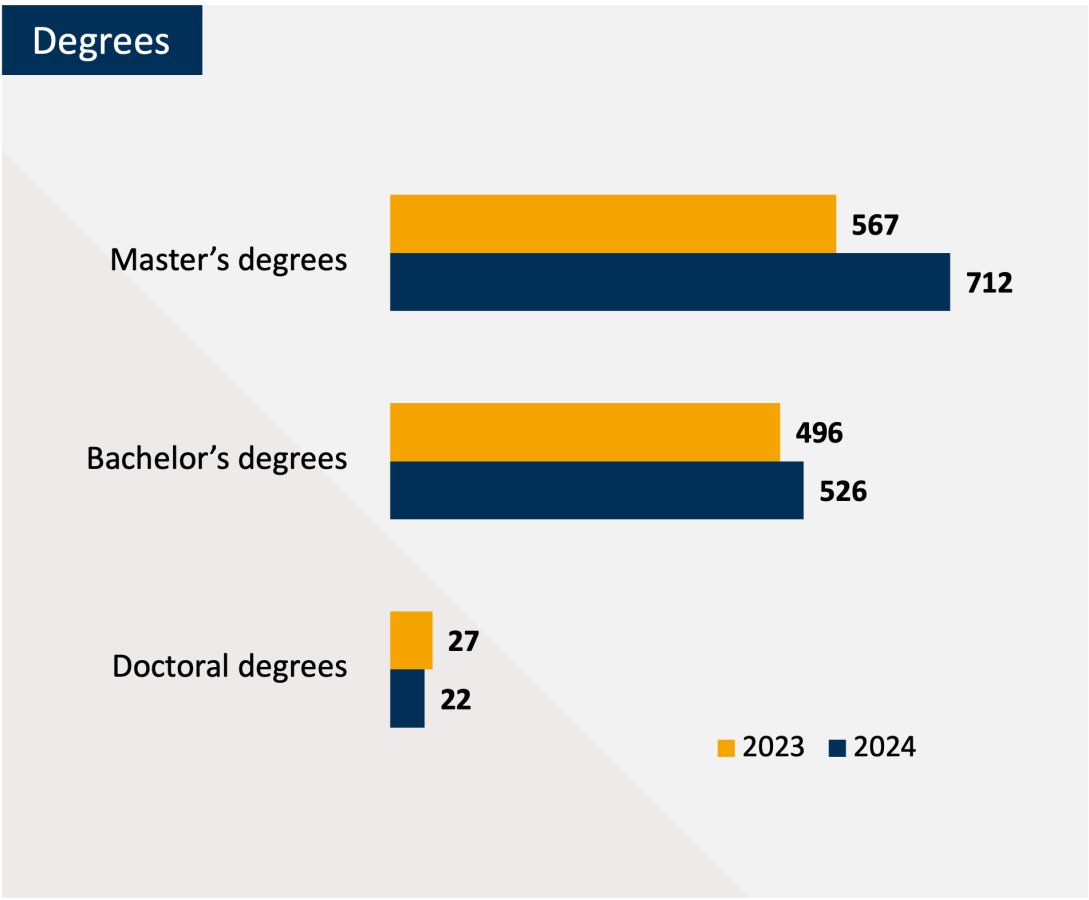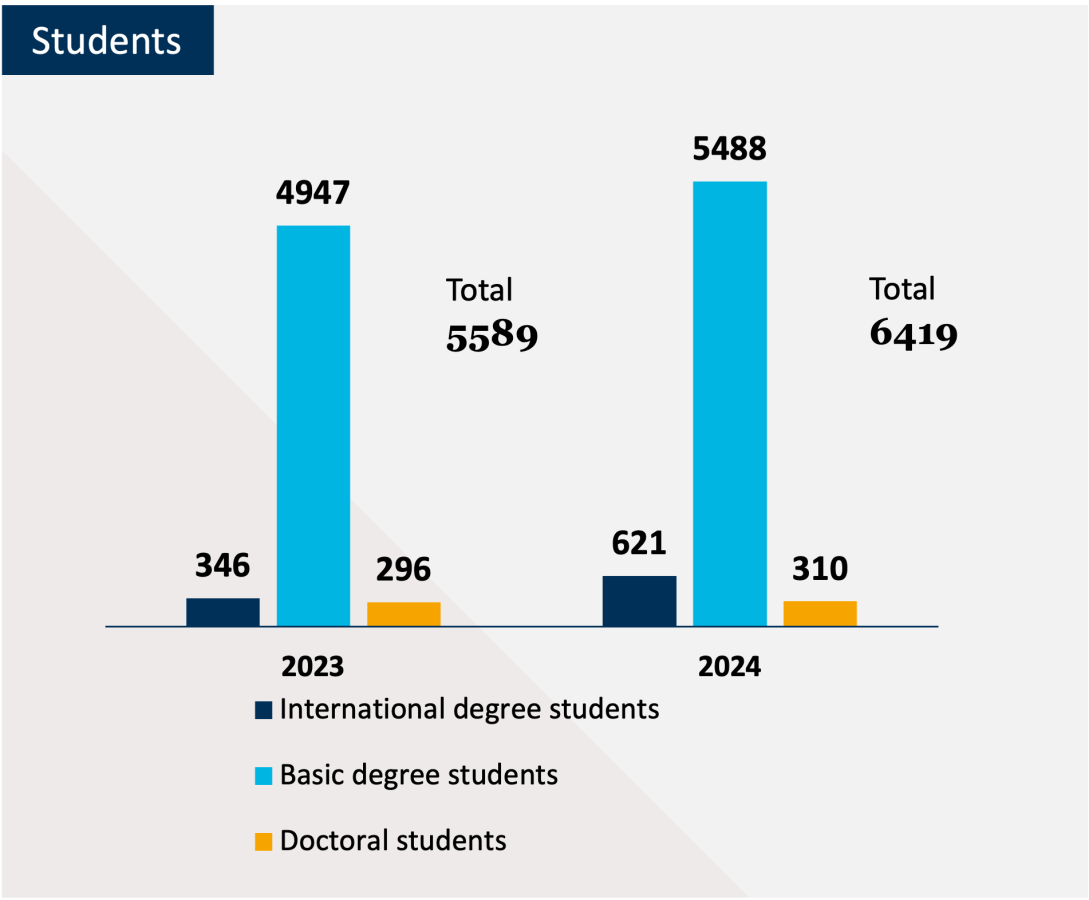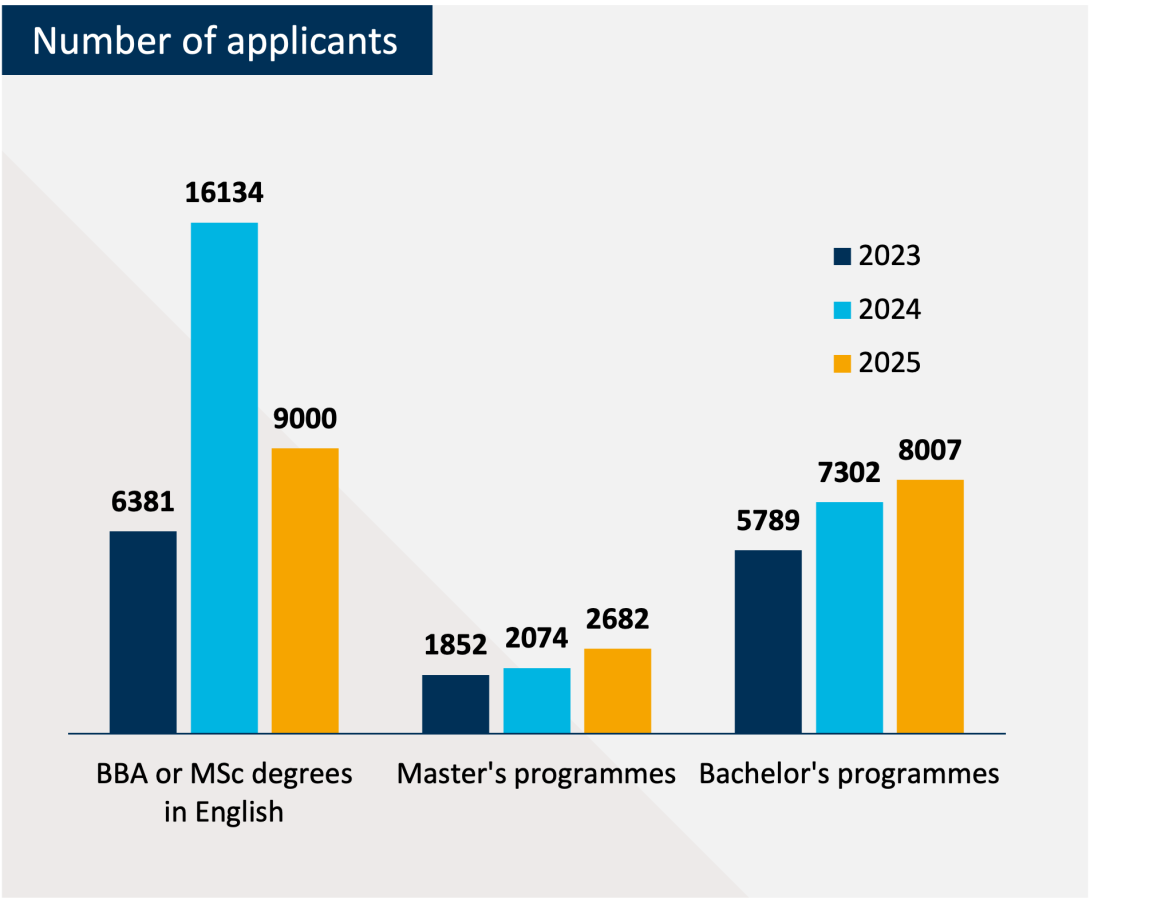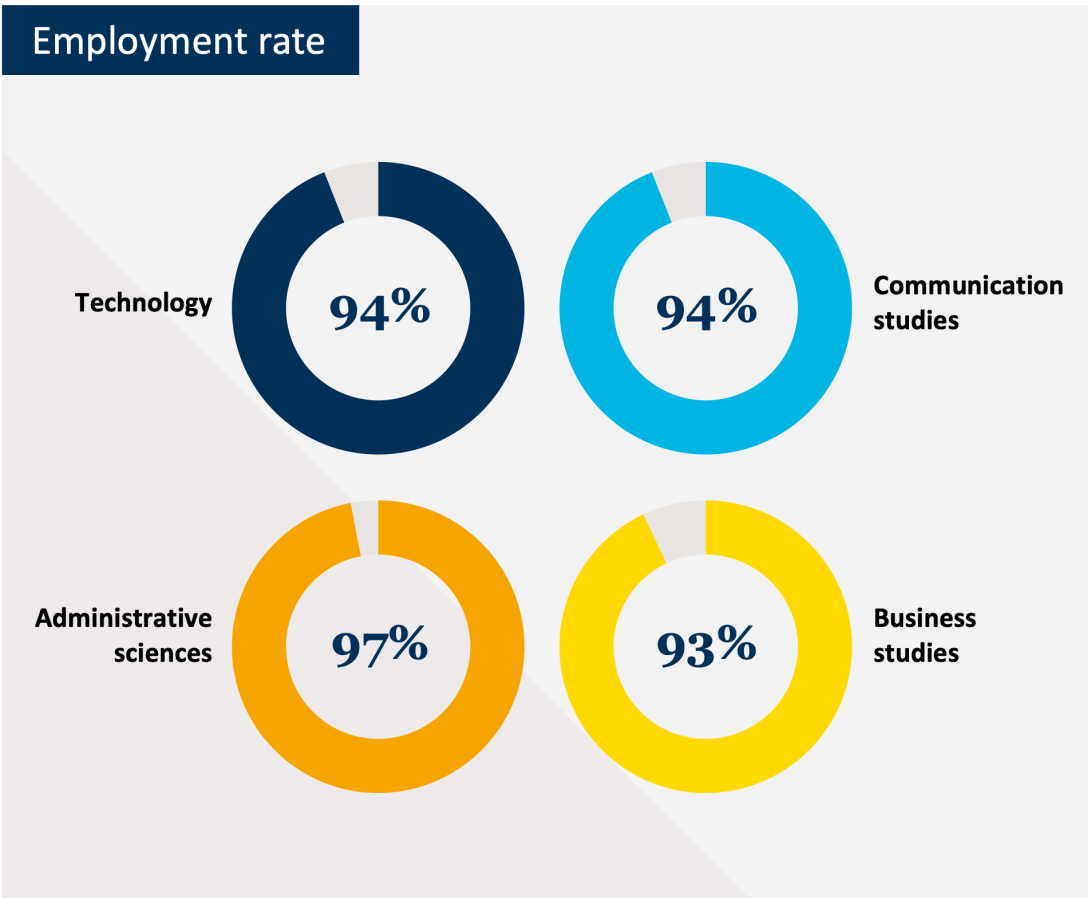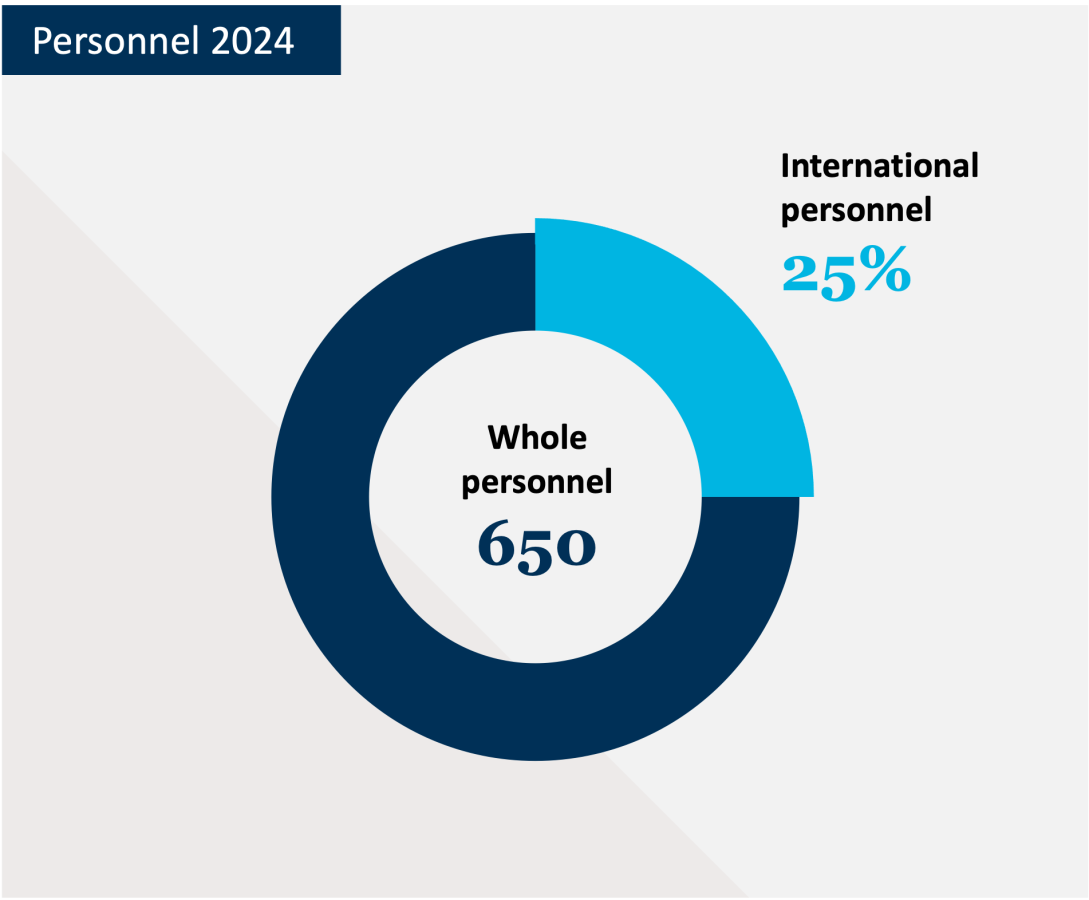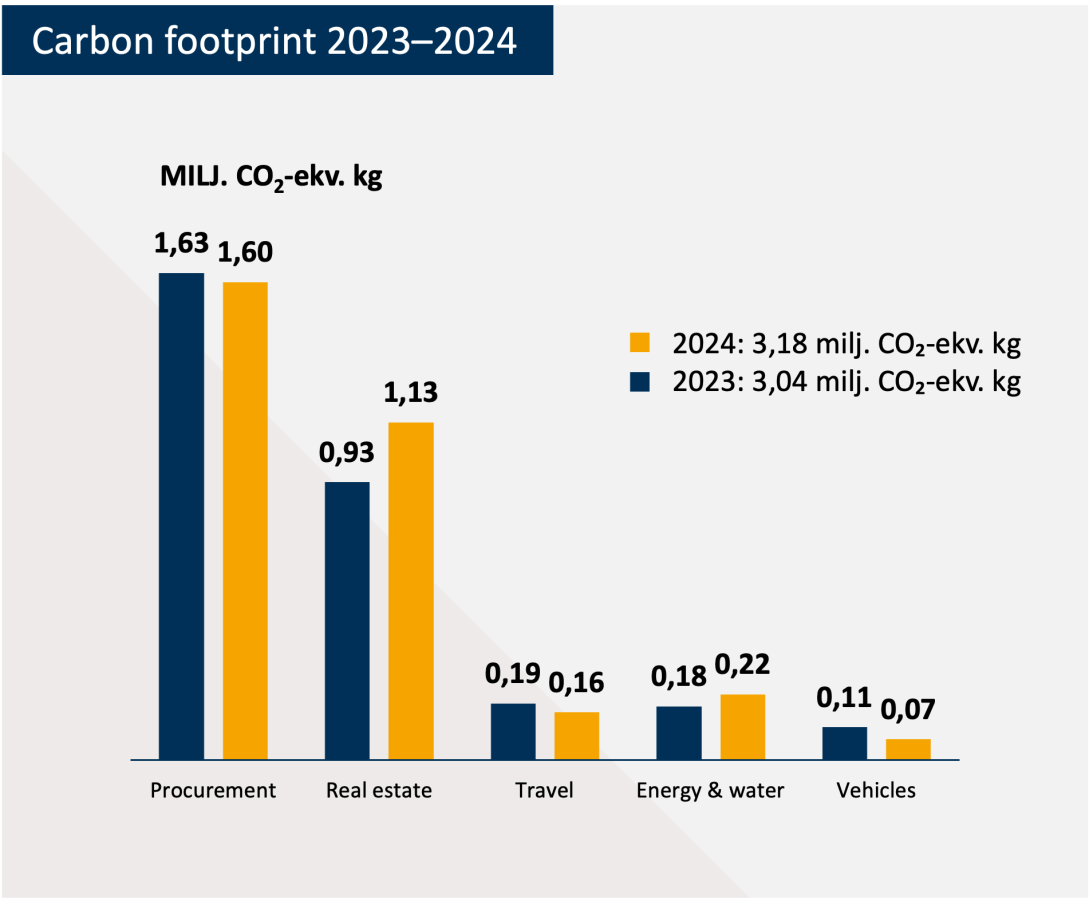A growing and internationalising university
Research
Our research is internationally high-quality, responding global societal challenges and informing both policy and practice. We focus on sustainable business, energy and society. We want to engage our partners in industry and society in our research activities.
Find out more about our research indicators.
In 2024, the total number of publications was 774. This represents an increase compared to 2023, when there were a total of 756 publications. In the publication forum classification (JUFO), there has been a clear increase in publications in category two journals and publishers compared to the year 2023.
Education
The educational experience at the University of Vaasa emphasises the role of teaching excellence, high-quality learning environments, equality and inclusion and community.
Find out more about our education indicators.
In 2024, a total of 712 students completed their master’s degrees, which was 25 percent more than the previous year and a record in the university's history. In addition, during the year 2024, the university awarded 526 bachelor's degrees and 22 doctoral degrees. The number of bachelor's degrees awarded increased by 6%.
In 2024, the University of Vaasa had a total of 6,419 students. The number of basic degree students was 6,109, and the number of doctoral students was 310. The number of international degree students increased. There were 621 international degree students, which is 11% of all basic degree students.
In 2025, 8007 applications were received for Bachelor's programmes, which is 9.3% more than last year. Finnish-language Master's programmes received 2682 applications, 29.3% more than last year. Over the two-year period (2023-2025), the number of applications to Bachelor's and Master's programmes has grown by 40%.
In 2025, approximately 9,000 applications were received for international bachelor's programme and master's programmes. The application fee introduced at the beginning of 2025 for applicants from outside the EU and EEA has reduced the number of applications to international Master's programmes across Finland.
Personnel
Our success and results are a direct result of the input of our skilled and committed researchers, teachers and experts. We invest in the wellbeing and career development of our staff. As a work community, we embrace diversity, and our collaborative work culture fosters inclusivity and equality.
At the end of 2024, the number of personnel was 650.
The proportion of international personnel is 25 percent of the total personnel. The proportion of employed international personnel in teaching and research positions is approximately 36 percent. Our employees represent 47 different nationalities.
Sustainability and responsibility
Our dedication to sustainability runs deep, with a commitment to incorporating the social, economic and ecological dimensions of sustainability into all aspects of our work. We are a valued partner within Northern Europe's largest energy technology hub, working towards affordable and clean energy, economic growth, industry innovation, and responsible consumption and production.
The carbon footprint refers to the climate emissions caused by human activity. In 2024, the University of Vaasa’s carbon footprint was approximately 3.18 thousand tonnes of CO2 equivalent greenhouse gases. The term “carbon dioxide equivalent” means that the cumulative effect of greenhouse gases is expressed as if they were all CO2. The Greenhouse Gas Protocol (GHG Protocol) is the most widely used standard for calculating environmental impacts. It classifies emissions into three categories:
Scope 1: Direct emissions from sources that are owned or controlled by the organisation. These emissions occur on-site as a result of the organisation’s own actions.
Scope 2: Indirect emissions from the consumption of purchased energy, such as electricity and heat.
Scope 3: All other indirect emissions that occur in the value chain of the organisation, including emissions from waste and water management, product procurement, and transportation.
